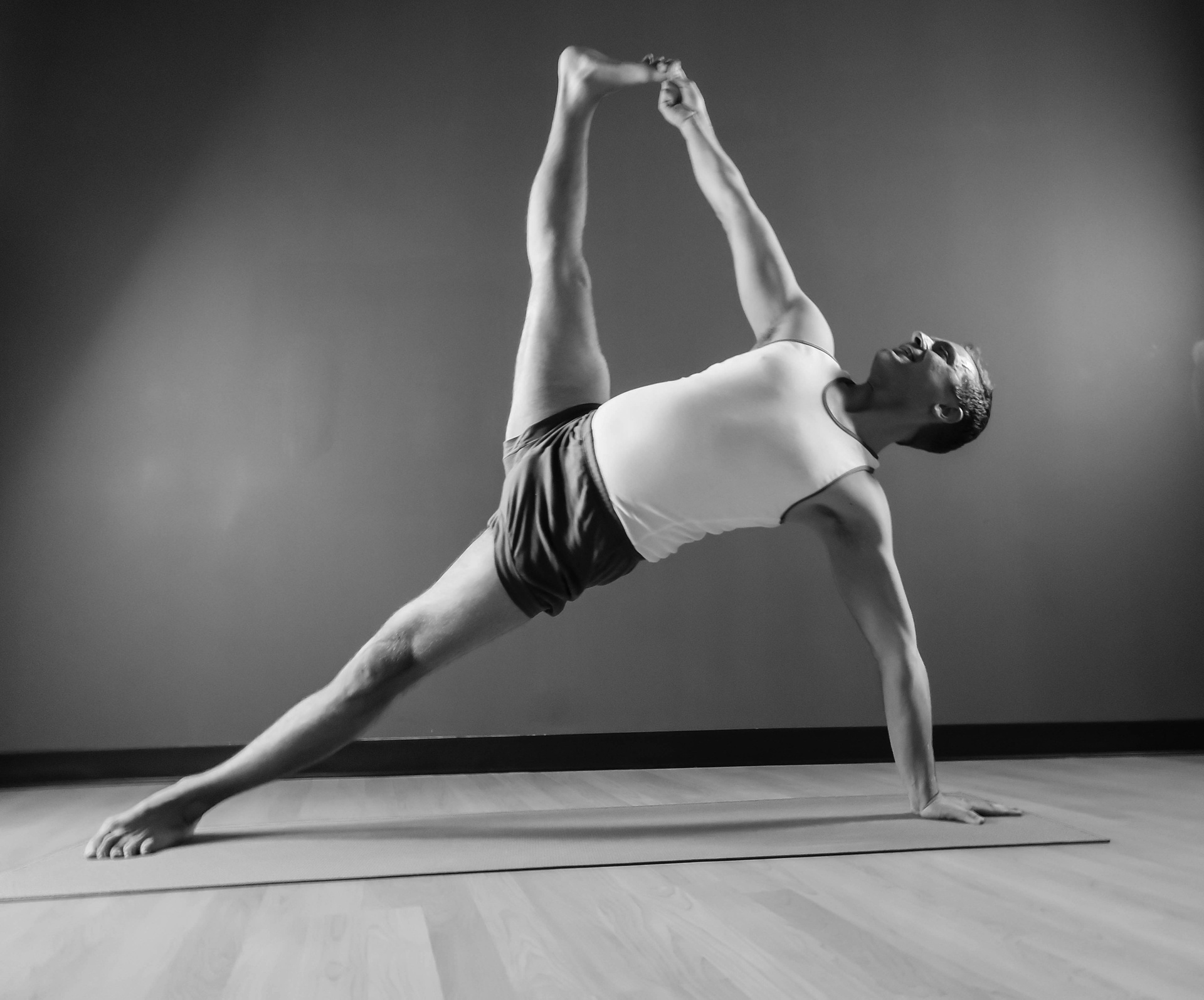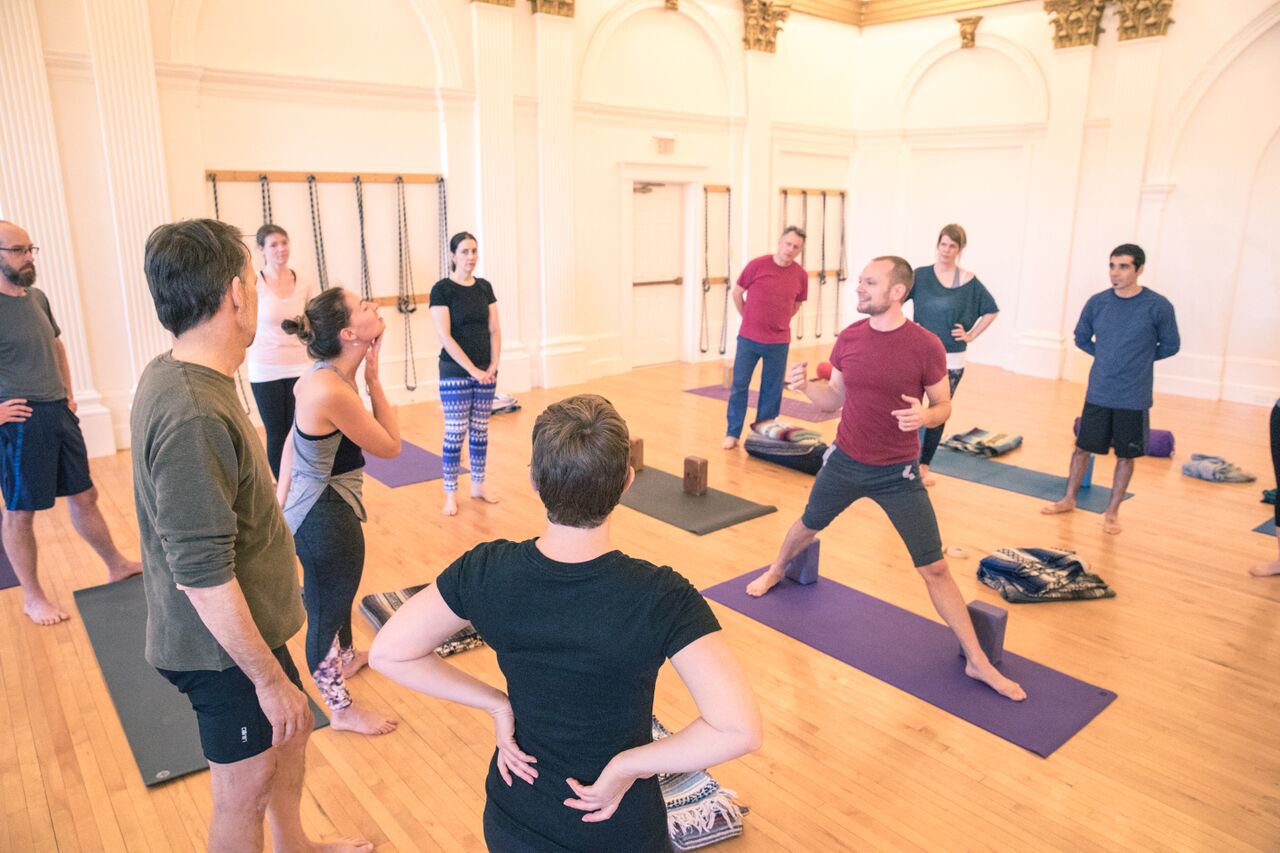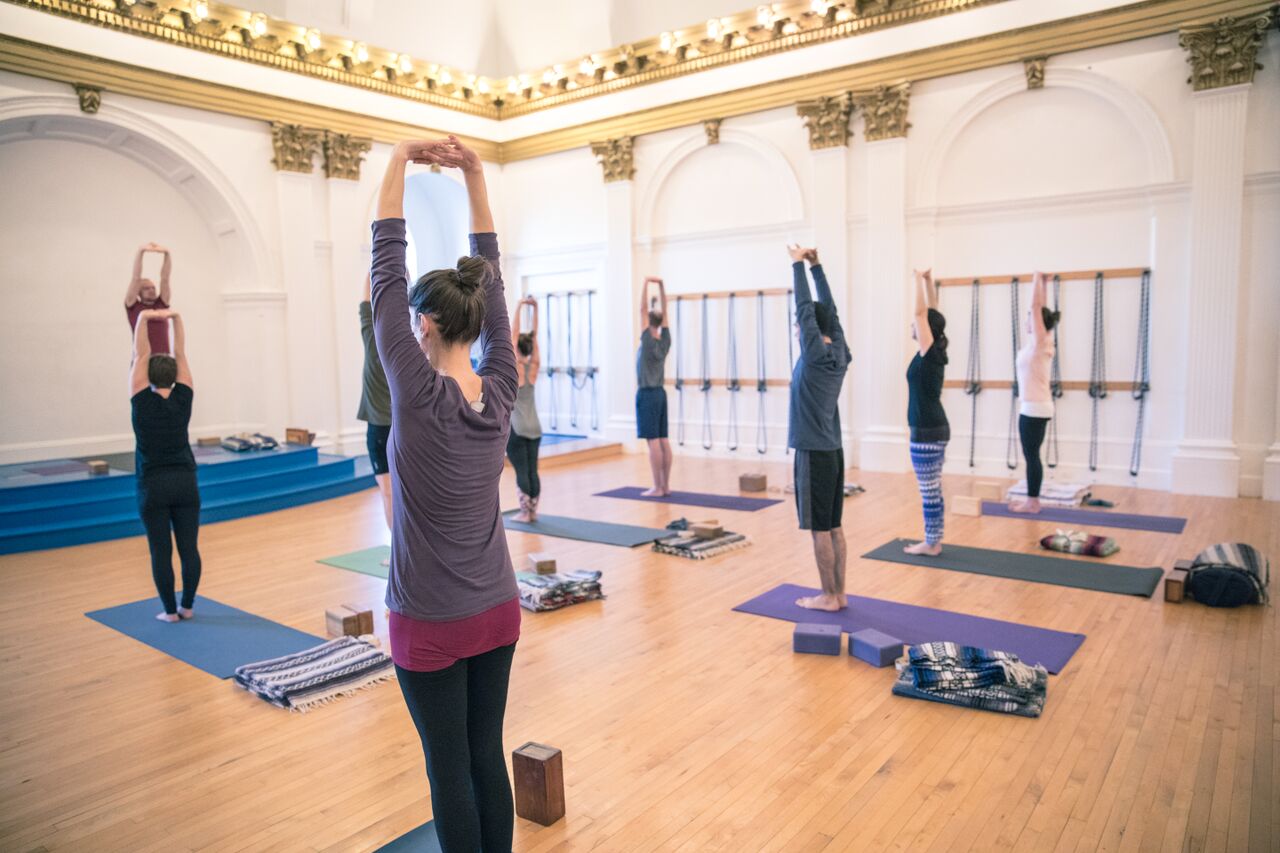Inside Teaching for Equity: Paul Menard
by Jenn Bodnar | August 2, 2021 5:07 pm
“I am honored to provide a series of classes for the LGBTQIA+ community. This series allows us to open our bodies while exploring that we are all divine.”
Paul Menard began studying yoga in 2002 and has maintained a passionate practice ever since. Their elegance and grace shines through both postures and the execution of their teaching. Paul’s pursuit of a more spiritual practice led to Karuna Center for Yoga and Healing Arts, where they are now the Director of this thriving center, offering yoga teacher training, workshops, bodywork, meditation, study of yoga scripture, and more. In addition to yoga, Paul has a fervor for education. Paul completed a master’s degree in Adult Education and Training in early 2011 and is a skilled Shiatsu practitioner.

Jenn Bodnar: How did you get into yoga?
Paul Menard: I found the practice of Asana years ago when I was working as a dancer. I had a teacher who not only believed in the benefits of yoga but was kind enough to share the practice. It was something that my body took to quite easily as my body was already supple and flexible. It was fun and exciting to learn new things about myself and the way that I could use my body.
Jenn: How did you get into teaching yoga?
Paul: I decided to become a teacher when the teachers that I was studying with began disappearing. I realize now that there’s a fairly high turnover rate for teachers as yoga is a challenging business to get into and stay with. Many of the teachers I know are what I call hobby teachers. They have a passion for teaching and teach as a passion project. So when all of these teachers began to disappear, I decided that it was my turn and I owed it to myself and the community to step up as a teacher.
Jenn: How did you become curious about Teaching for Equity?
Paul: I became more curious about Teaching for Equity offered by yoga alliance as I was doing my own self searching. As I continue to learn more about sexuality, sexual orientation, and gender identification, I’ve begun to think more about myself and how I identify. Growing up as a gay man, I didn’t have the language to express my identity accurately. I have always identified with both my masculine and feminine side and now have different words to reconcile and explore these parts of me. Now I realize that many of these titles fit quite snugly to how I identify already. It was through this soul searching that I began to look differently at the community and know that my community in the community that I represent is often underserved and separated. Many of us who fall under the umbrella of LGBTQIA+ find comfort in a collective or group. To the degree that many of us don’t even seek group activities or exercise in groups. Many don’t join gyms or become members of yoga studios because of feelings of separation, judgement, or harassment.
And so, we tend to be at risk for things like heart disease, depression, suicide, etc. As we are both not seeking physical health and not receiving the mental health benefits that come with a practice like yoga.

Jenn: Tell us about your community
Paul: Northampton Massachusetts is known as a very liberal town and arguably the most liberal state in the country. However, there is racism, sexism, gender prejusice, and hatred in every corner of the globe. Just like anywhere else, it is challenging for gay men and women to be excepted in jobs that are typically thought of us outside of gender roles and can be even harder to maintain. I see this truth in the trans community as jobs, especially service jobs that are customer facing, can come with their own challenges, discomfort, fear, and can make a workplace scary or hostile.
Over the last year and a half, it has been challenging to access students in general as in person contact has been limited. Northampton is a very liberal corner of the world, we don’t open up services easily and tend to air on the side of caution. Which for services like the one I offer makes it more challenging for students to access. Unless they have money or influence.
Jenn: What are some of your happiest moments? What are some of the big wins you’ve experienced in your community?
Paul: I always say that yoga is about millimeters. At least in terms of our physical practice. Little changes make big shifts. The ability to stand upright and tall does incredible things for not only our digestive system and our lungs but also for our mental health, allowing ourselves to appear more open and welcoming to others and truly experiencing what it’s like to connect on a deeper level when we are open to do so. I see this in many students. As they open up their bodies, they also open their minds and hearts to others in the yoga community and in the community at large. The biggest joy for me is seeing this change. Seeing those who are guarded and shut down begin to open up. You can see it in the way their eyes shine, the way their faces light up, and the way the smile grows on a face that is usually devoid of one.

Jenn: Where do you see your work in five years?
Paul: Oh, my work is and has begun to move in the direction of assisting those who need more individualized attention and care. Not only am I looking to assist in marginalized communities, I have also been working more and more with communities over the age of 60, 70, and 80. The common saying is that yoga is for everyone, but not every yoga class is acceptable to every age and ability. This will mean more education in topics such as sports medicine, anatomy, and physiology.
Jenn: Where can we learn more about you:
Paul: You can learn more about me at <> and our social media channels on Instagram (@karunayoganoho), Facebook (Karuna Center for Yoga and Healing Arts) and Twitter.
Source URL: https://yogadigest.com/inside-teaching-for-equity-paul-menard/